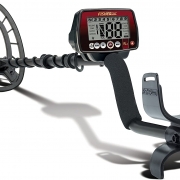Difference between Gold and Metal Detectors
| Aspects | GOLD DETECTORS | METAL DETECTORS |
| Purpose | Gold detectors have the sole purpose of detecting gold objects buried underground, distinguishing them from the other metallic compounds, or completely ignoring them, because they are not precious. | Metal detectors have the purpose of detecting the presence of metallic objects buried in a medium whether it is ground, water, or otherwise to ensure it can be extracted or taken out of the system successfully. |
| Frequency Range | Gold detectors are specifically designed to work with higher frequencies so that they will only respond to dense and precious metals with precision, and not ignore very close to surface gold nuggets. | Metal detectors are very versatile and depending upon the user requirement and size, they can work on several frequencies and the users have the flexibility to choose a suitable one. |
| Uses | Gold detectors are a very specific type of metal detection instrument that is used for the purpose of finding treasures in form of gold coins, gold nuggets or relics statues, and antiques below ground, underwater, or for other multiple purposes. | Metal detectors are used for all purposes where the metal is required to be separated from nonmetal items for example for security purposes in walk-through gates, in the construction industry, in the retail sector, for physical research, in production of sensitive equipment, etc. |
| Depth | Because of the nature of gold detectors working on a higher frequency, it is very difficult for them to work on very great depths in the ground and mostly work very close to the surface of Earth starting from one inch to a few meters. | Because of the versatile nature of metal detectors, they are designed to focus on all or some of the specific class of metal objects, so they can have varying depth options from very less to very high as the frequency of them varies. |
| Discrimination | In gold detectors, the feature of discrimination is very important because only one metal is the center of attention which is Gold, so it must be separated from other metals during the detection process to avoid wastage of any time. | Metal detectors can be equipped with discrimination or not depending upon how the buyer intends to use them. If they want to use it for the purpose of identifying metals from nonmetals then discrimination is not necessary. But if the user requires to classify the detected metal as a certain type e.g. iron copper, aluminum, or gold, then discrimination in metal detection becomes helpful. |
| Coil Size | Coil size has a variety of options to choose from depending upon the user’s preference, as smaller coil sizes will be more helpful in detecting gold nuggets, but bigger coils will be more helpful to look for bigger gold items. | Coil technology is pretty much the same in both, and size has a variety of options to choose from as well. It also depends on the user’s preference, as smaller coil sizes will be more helpful in detecting smaller items like insecurity, but bigger coils will be more helpful to look for metallic items for example in construction or research. |
| Major Difference | Gold detectors are a type of metal detector where the emphasis of the detection technology is to classify whether the metal is gold or other nonprecious metals, to target and mine gold from below the surface of ground or water. | Metal Detectors are a major type of detection instrument that uses a specified set of technologies to classify different types of metals or metals in general in a specific location underground or underwater which is not visible otherwise. |
It can be safely concluded that every gold detector is a metal detector but every metal detector is not a gold detector.


 03111444615
03111444615